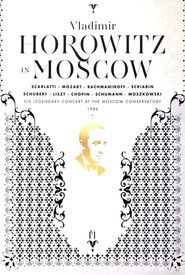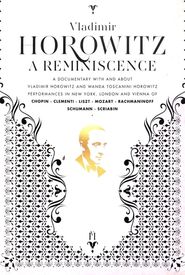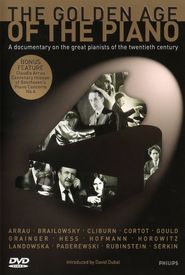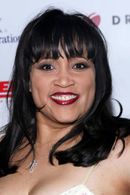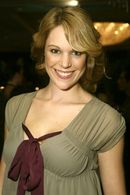Vladimir Samoylovich Horowitz was born on October 1, 1903, in Berdichev, near Kiev, Ukraine, which was then part of the Russian Empire.
His father, Simeon Horowitz, was an electrical engineer, and his mother, Sophie Horowitz, was a professional pianist and teacher at the Kiev Conservatory.
Young Vladimir Horowitz took his first piano lessons from his mother, and at the age of 9, he entered the Kiev Conservatory, where he studied with Vladimir Puchalsky, Sergei Tarnowsky, and Felix Blumenfeld.
At the age of 11, he met and played with Aleksandr Skryabin, and he graduated from the Conservatory in 1920 with the performance of the Piano Concerto No. 3 by Sergei Rachmaninoff.
By that time, his family was devastated by the purges of the Russian Revolution, and all of their property, including the piano, was seized by the Bolsheviks.
Horowitz performed extensively in Kharkov, Kiev, Moscow, and Leningrad, acquiring a reputation as a virtuoso, and in 1925, he left Russia and gave 69 concerts in Europe during the season of 1926-1927.
He studied briefly with Alfred Cortot in Paris and made his American debut in 1928 with the New York Philharmonic, playing the Piano Concerto No. 1 by Pyotr Ilyich Tchaikovsky.
Horowitz's debut was a sensation, and he performed sold-out concerts and commanded the highest fees throughout his legendary career.
In 1932, he performed the Emperor Concerto by Ludwig van Beethoven with the conductor Arturo Toscanini and won the admiration of the maestro.
The same year, in Milan, Italy, Vladimir Horowitz married Wanda Toscanini, and they had one daughter.
Horowitz and Toscanini gave a remarkable fund-raiser for the war effort with their 1943 performance of the Piano Concerto No. 1 by Pyotr Ilyich Tchaikovsky, raising $10,000,000 for the allies in the Second World War.
Horowitz was a close friend of Sergei Rachmaninoff, and they played piano together at Rachmaninov's home in Beverly Hills.
Rachmaninov famously admitted that Horowitz surpassed him in the interpretation of his Piano Concerto No. 3, and Horowitz played with unusually stretched fingers and low wrists, but even Rachmaninov said, "Horowitz plays contrary to what they taught, yet somehow with Horowitz it works."
He performed an immensely wide repertoire, ranging from Arcangelo Corelli to Aleksandr Skryabin, and he also made fine transcriptions of "Pictures at an Exhibition" by Modest Mussorgsky and of "Hungarian Rhapsody No. 2" by Franz Liszt, which are considered to be the most difficult, even for a virtuoso like Horowitz.
At some points in his career, Horowitz suffered from anxiety and depression, taking long breaks, especially from 1953-1965 and from 1969-1974.
On several occasions, he was said to have experienced stage fright and had to be pushed onto the stage, but once he was sitting at the piano, he was perfect, and his playing was famous for refined nuances, clear articulation, definitive phrasing, and impressive tone.
In 1986, Horowitz made a sensational tour of Russia, where he took his own Steinway piano in a bullet-proof case.
His performances in Moscow and Leningrad (St. Petersburg) were sold out many months prior to his arrival, and these performances had both musical and political importance at the time when Mikhail Gorbachev was making changes in the rigid Soviet system.
The acclaimed concert performance was released on video as 'Horowitz in Moscow' (1986).
Vladimir Horowitz died of a heart attack on November 5, 1989, in New York, and he was laid to rest in the Toscanini family tomb in Cimitiero Monumentale, Milan, Italy.

